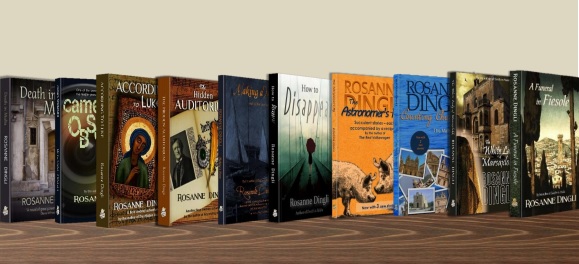 Image via Wikipedia
Image via WikipediaThere was a time when
sacred art was just about the only permissible art. Church decoration and the establishment of private chapels, shrines and
mausoleums meant there was a lot of work for artists in certain centres of learning, big cities, and cathedral towns.
Being an artist meant understanding realistic representation, and heeding the scriptures. It meant listening hard to what patrons wanted, and studying pictures 'on site'. There was no means of reproducing paintings: one had to go and see them for oneself or view another artist's copy.
Artists would visit famous depictions of
saints, make sketches, return to their town and regale everyone at their 'shop' or studio about what they had seen. In this way they spread styles, fashions and innovations.
The evangelists,
Mary and
Baby Jesus,
the Crucifixion, the
Annunciation and Nativity and famous martyrs were depicted over and again by various artists to grace alterpieces, vaults, monastery walls, churches and palaces, the ceilings of libraries and private chapels.
St Luke was a popular subject, because his testament, or gospel, was one that narrated some very special stories, unique to the saint: duplicated nowhere else in the scriptures. The evangelist was painted by a great number of artists through the ages. Most can be found online. Many show the saint painting Mary, since legend has it that the two had met in person, and Luke could depict the
Holy Mother from memory.
Luke became the advocate of painters, and was the patron saint of many artists' guilds and associations, a custom that began in the
Middle Ages, or perhaps before. The symbol for this evangelist is the calf, or young bull, and artists' paraphernalia is often placed around the picture: an easel, paints and brushes. Being also described in the
Acts of the Apostles as a physician, Luke is variously painted with herbs and flasks, which signify healing.
One of the most fascinating aspects of the various ways Luke has been depicted by artists through the ages is how most of them chose the clothes, interiors and artefacts of their own times with which to portray the saint. So it is possible to find Byzantine Lukes, Medieval Lukes, Renaissance Lukes, Baroque Lukes and Neoclassic Lukes.

Artists who have painted Luke include:
El Greco, Nicklaus Manuel,
Rogier van der Weyden,
Giorgio Vasari, Jacobsz van Heemskercke,
Quentin Massys,
Marten de Vos, and Guercino.
Why this fascination with a disciple who lived almost 2000 years ago? The fact we know so little about the saint adds mystery to a story that - from the little shown in the
New Testament - seems to hint at a life of adventure and risk.
Adventure and risk that intrigued me enough
to write a book that concerns some of that life, how it was lived, and what mysteries it holds to a present-day reader. I wove it into a modern-day thriller, complete with mobile phones, guns and lifts. Complete with magazines, computers and planes. Complete with USB drives, text recognition software and yes, a car chase.
According to Luke contains more than one story. How they are woven together might be interesting to read. Chapters One and Two are available. The paperback and eBook will be out in a matter of weeks.
More Rosanne Dingli blogs about St Luke:
Why I write about St Luke
6 Things You Need to Know About St Luke











